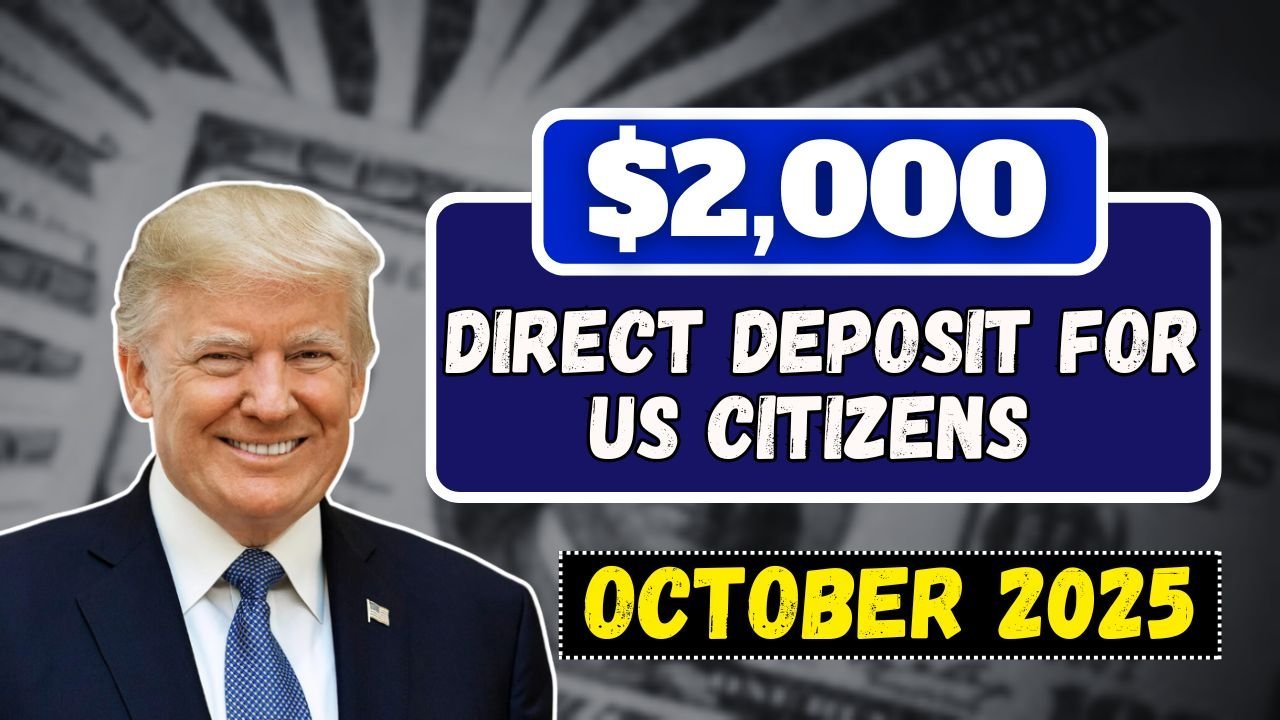A new wave of relief is on the way for millions of Americans this fall. The Internal Revenue Service (IRS) has officially confirmed that $2,000 direct deposit payments will start rolling out in October 2025, bringing some much-needed financial breathing room to families and individuals struggling with high prices and rising bills.
For many households still feeling the pinch from inflation and steep housing costs, this couldn’t come at a better time. The $2,000 deposit aims to ease everyday pressures—helping people catch up on rent, pay off credit cards, or simply enjoy a little peace of mind before the holiday season.
Why a $2,000 Direct Deposit Now?
Even though the economy has shown some improvement, everyday Americans are still battling the rising cost of living. Groceries, gas, and healthcare all remain stubbornly high, leaving many families stretched thin. The government designed this $2,000 payment specifically to support low- and middle-income earners, especially those whose incomes have dropped in recent years.
This money isn’t a loan—you won’t need to pay it back. Instead, it’s a federal relief payment meant to keep households stable and stimulate spending in local economies. When people have a little extra to spend on essentials, small businesses and communities benefit too.
Who’s Eligible for the $2,000 Direct Deposit?
The IRS has outlined clear eligibility rules to ensure the payments reach the people who need them most.
1. Income Requirements
Eligibility will be based on your Adjusted Gross Income (AGI) from your 2023 or 2024 federal tax return:
- Single filers: Less than $75,000
- Head of household: Less than $112,500
- Married couples filing jointly: Less than $150,000
Those earning slightly above these amounts may still receive a reduced payment, as the benefit gradually phases out with higher income levels.
2. Social Security and VA Recipients
Good news for seniors and veterans: if you receive Social Security (SSI or SSDI), Veterans Affairs (VA), or Railroad Retirement benefits, you’re also eligible. Even if you haven’t filed a tax return recently, the IRS will use your existing benefit records to process your payment automatically.
3. Citizenship Status
Only U.S. citizens and legal permanent residents with valid Social Security numbers qualify. Non-residents and temporary visa holders are not eligible.
When Will the Payments Arrive?
The IRS has announced that the first round of $2,000 payments will begin in late October 2025.
- Direct Deposit: Starting around October 21, 2025
- Paper Checks & Debit Cards: Expected within 2–4 weeks afterward, depending on mail delivery times
If you previously received your tax refund or stimulus payment via direct deposit, the funds will go to that same account. On your bank statement, look for a description such as “IRS TREAS 310 TAX RELIEF” or “Economic Payment 2025.”
How to Track Your Payment
The IRS will soon reactivate its “Get My Payment” portal, allowing taxpayers to:
- Check their payment status in real time
- Confirm whether the deposit is coming via direct deposit or mail
- Update banking or address details if necessary
To avoid delays, make sure your tax filings are up to date.
What You Should Do Now
If you haven’t filed your 2023 tax return, do it soon—this is how the IRS verifies eligibility and processes payments.
Non-filers who receive federal benefits don’t need to do anything. The IRS will automatically pull information from the Social Security Administration or VA databases.
If your bank account or address has changed recently, update it through the IRS website or your latest tax filing.
Why This Matters for Millions
For countless Americans, this $2,000 payment will provide more than just financial assistance—it’s a lifeline. Whether it helps pay rent, catch up on medical bills, or stock up on groceries, it’s a reminder that help is still available.
Beyond the numbers, this initiative signals a broader commitment to stabilizing families and strengthening communities nationwide. In a time of uncertainty, every bit of relief counts.
In short, October 2025 could bring a small but meaningful boost for millions across the country—one that helps Americans regain control, restore confidence, and look forward to brighter days ahead.
FAQs
1. Do I need to apply for the $2,000 payment?
No. Payments are automatic for eligible individuals based on tax or federal benefit records.
2. When will I receive my payment?
Most direct deposits will be sent between October 21–31, 2025. Paper checks may take longer to arrive.
3. Is the payment taxable?
No. The $2,000 payment is not taxable and will not affect your Social Security or VA benefits.
4. How do I update my bank or mailing information?
Use the “Get My Payment” portal on the IRS website or file your latest tax return with updated details.
5. Can non-filers receive the payment?
Yes. Non-filers who receive Social Security or VA benefits are automatically included in the payment rollout.
